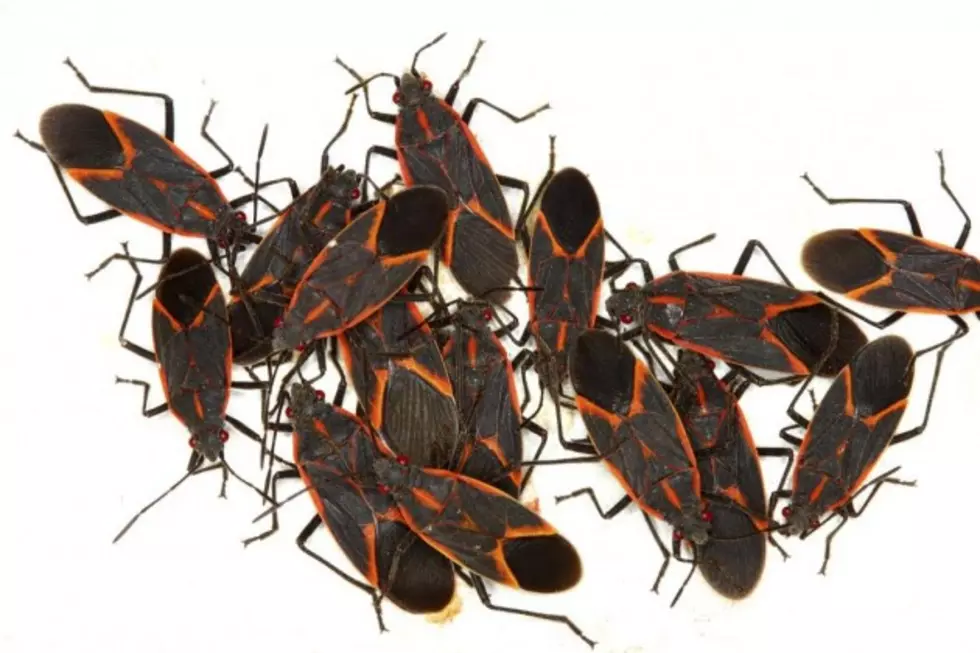
Have You Noticed those Black and Red Bugs Again? Welcome Back Boxelder Bugs
Along with the changing of the leaves and the Halloween decorations, one other sure sign that autumn is upon us is the red and black, six-legged visitors that seem to appear out of nowhere, crawling on the warm, sunny sides of buildings. Searching for the perfect place to overwinter, the Boisea trivittatus, are making themselves known.
As I was walking to my mailbox (which is located on the south side of my house), I found myself finger-flicking two boxelder bugs that decided they were going to use my arm as a possible ride into my house. Even though they are basically a harmless creature, I still live with the childhood memories of my sister pinching them between her fingers, and chasing me around the kitchen table.
As a kid, I wasn't sure if they were biters, or if I was just going to have to live with them trekking their way along my bedroom wall, heading for my duck night-light, as I tried to fall asleep at night. (One night I remember, one of those little freaks actually made it INTO my duck night-light! I will never forget looking at my dresser and seeing the shadow of that stupid boxelder bug, crawling around the INSIDE of my light! That's the sort of stuff nightmares are made of - at least in the mind of a seven-year old girl.)
Boxelder bugs are familiar insects to most people. They usually go unnoticed by most during the summer months and really step up their game during autumn as they look for a place to make their home as temperatures drop and winter approaches.
These red and black insects usually spend most of their time in boxelder trees, but can also feed on ash and maple trees (like the giant one my neighbor has!) Adult boxelders can fly on the average of about two blocks, but have been known to travel for up to two miles. (But I'm pretty sure they just like to fly around my head, reminding me that they need a place to stay.)
These bugs don't really care where they hang-out, but during fall, they prefer buildings that have a large southern or western exposure. (So in other words, my double garage door - which faces south - is perfect!)
As the weather begins to cool, the boxelder bugs will begin to push themselves into the cracks of businesses and homes, often taking shelter around windows, in walls, attics and areas until it warms up. They are generally inactive during cooler temperatures, but as the temperature rises, so does their energy and enthusiasm levels! By spring, those that have survived the swatter, have one goal, to get back outside. But those little creatures aren't very smart, usually forgetting how they got in and becoming trapped inside.
Doing my research, I found that the boxelder bug is more of just a nuisance to people. They don't bite (thank goodness!) and are harmless, except for one thing. When abundant, they can stain walls, curtains and other surfaces with their excrement. (ick!)
Preventing the boxelder bug from becoming a part of your life is relatively simple. You can keep the cracks of your home repaired and filled, you can remove any boxelder, ash or maple trees from your property (which won't be an option for me because that maple tree causing the problems is my neighbors!) or use an insecticide. Once they make their way into your home, the easiest way to remove them is physically remove them, perhaps with a vacuum or a broom and dust pan. (Or, you could do what my mom used to do. She would put an old Cool Whip container with about an inch of dish soap in it by the sink, catch them and throw them in. Again, something that nightmares are made of for a seven-year old girl!)
The good news is, experts say that although you may encounter large numbers of boxelder bugs in a given year, they are not automatically abundant every season.
More From KIKN-FM / Kickin' Country 99.1/100.5








